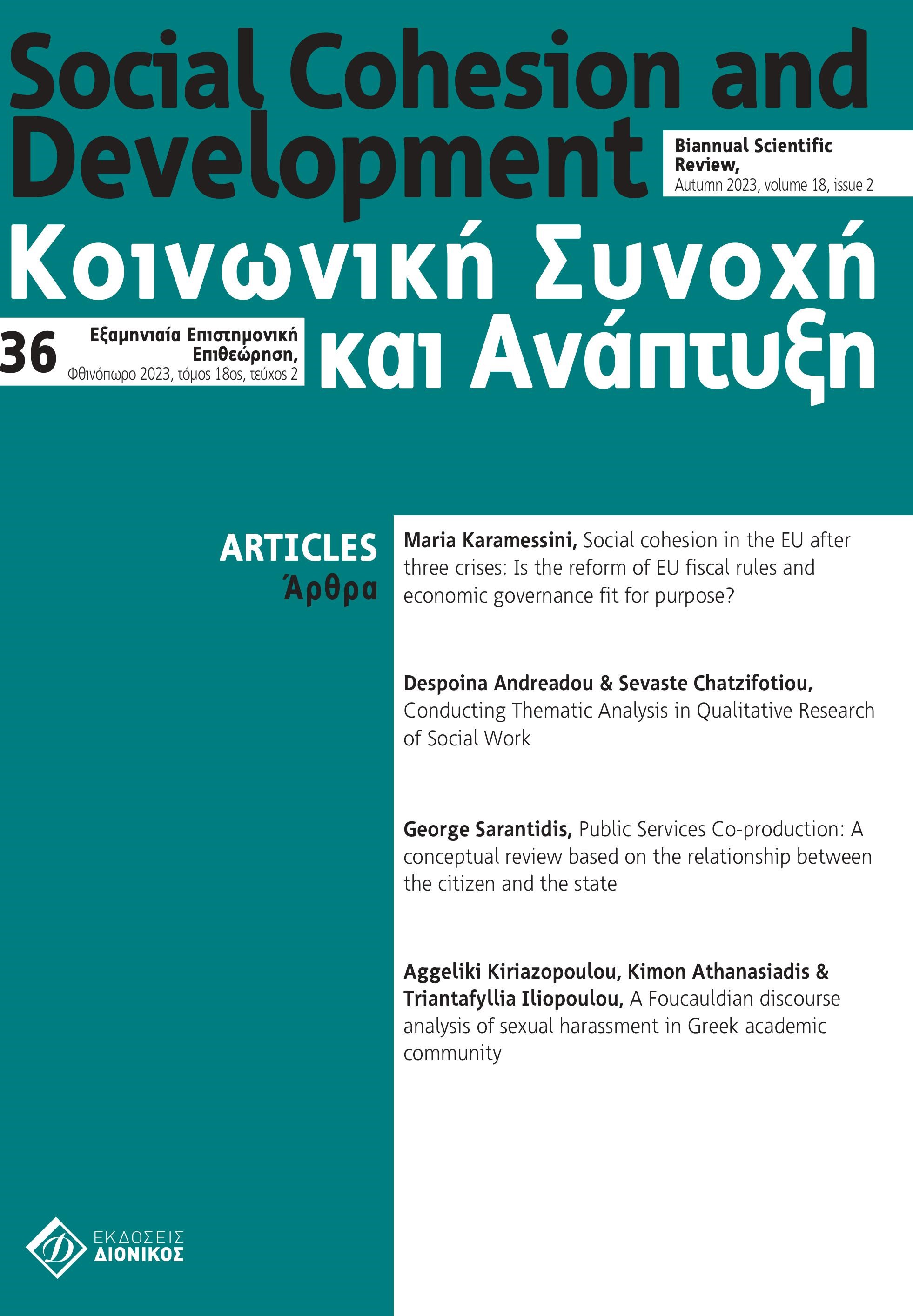Μια Φουκωική ανάλυση λόγου της σεξουαλικής παρενόχλησης στην Ελληνική ακαδημαϊκή κοινότητα
Περίληψη
Η παρούσα έρευνα διερευνά τις απόψεις των Ελ-
λήνων προπτυχιακών φοιτητών για τη σεξουαλική
παρενόχληση στην ακαδημαϊκή κοινότητα. Το δείγ-
μα ήταν 6 μαθητές και τα δεδομένα αναλύθηκαν
με τη χρήση της Φουκωικής Ανάλυσης Λόγου.
Τέσσερα βασικά θέματα προέκυψαν από την ανά-
λυ-ση: Η ευαλωτότητα των «τυφλών φύλων», η
εξουσία ως κινητήριος δύναμη, η πατριαρχία ως
ανα-πτυξιακός παράγοντας για τον άνδρα θύτη και
οι σχέσεις εξουσίας στην ακαδημαϊκή κοινότητα. Η
πατριαρχία αποτελεί αναπτυξιακό παράγοντα για
τον άνδρα θύτη, ηθικοποιώντας έτσι πρακτικές και
συμπεριφορές που αναπτύσσουν τον φόβο και την
κουλτούρα της σιωπής. Όσον αφορά την ακαδη-
μαϊκή κοινότητα, οι σχέσεις εξουσίας βασίζονται
στις έννοιες του κύρους, του κέρδους και στην υ-
ψηλή θέση, ερμηνεύοντας έτσι τις σχέσεις εξουσίας
ως σχέσεις μεταξύ των φύλων.
Λεπτομέρειες άρθρου
- Πώς να δημιουργήσετε Αναφορές
-
Kiriazopoulou , A., Athanasiadis , K., & Iliopoulou , T. (2023). Μια Φουκωική ανάλυση λόγου της σεξουαλικής παρενόχλησης στην Ελληνική ακαδημαϊκή κοινότητα. Κοινωνική Συνοχή και Ανάπτυξη, 18(2), 151–162. https://doi.org/10.12681/scad.37480
- Τεύχος
- Τόμ. 18 Αρ. 2 (2023): Νο 36
- Ενότητα
- Άρθρα

Αυτή η εργασία είναι αδειοδοτημένη υπό το CC Αναφορά Δημιουργού – Μη Εμπορική Χρήση – Παρόμοια Διανομή 4.0.
Οι συγγραφείς των άρθρων που δημοσιεύονται στην Κοινωνική Συνοχή και Ανάπτυξη διατηρούν τα δικαιώματα πνευματικής ιδιοκτησίας επί των άρθρων τους, δίνοντας στο περιοδικό το δικαίωμα της πρώτης δημοσίευσης. Άρθρα που δημοσιεύονται στην Κοινωνική Συνοχή διατίθενται με άδεια Creative Commons 4.0 και σύμφωνα με την άδεια μπορούν να χρησιμοποιούνται ελεύθερα, με αναφορά στο/στη συγγραφέα και στην πρώτη δημοσίευση για μη κερδοσκοπικούς σκοπούς και με δικαίωμα τροποποίησης μόνον με παρόμοια διανομή (αν αναμείξετε, τροποποιήσετε, ή δημιουργήσετε πάνω στο υλικό, πρέπει να διανείμετε τις δικές σας συνεισφορές υπό την ίδια άδεια όπως και το πρωτότυπο).


